But the seller had to think about selling. Meanwhile I made a deal on the Clamshell Mutoscope
which is shown on another project page here in some detail.
I did finally make a deal on this Indian and put it on hold until the "B" Clamshell was more or less done.
I have finally started work on the Indian. It has been disassembled and evaluated.
There are some issues I knew about and others I did not,
There is damage to the side panels, and more.
Photos will follow as I go along.
(Please do not reproduce these images without permission )

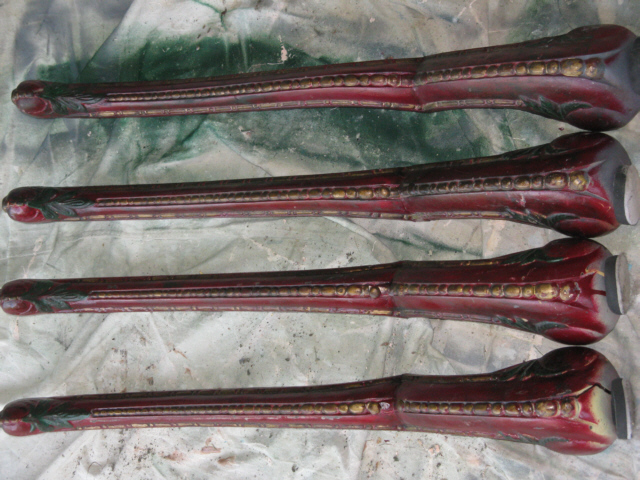
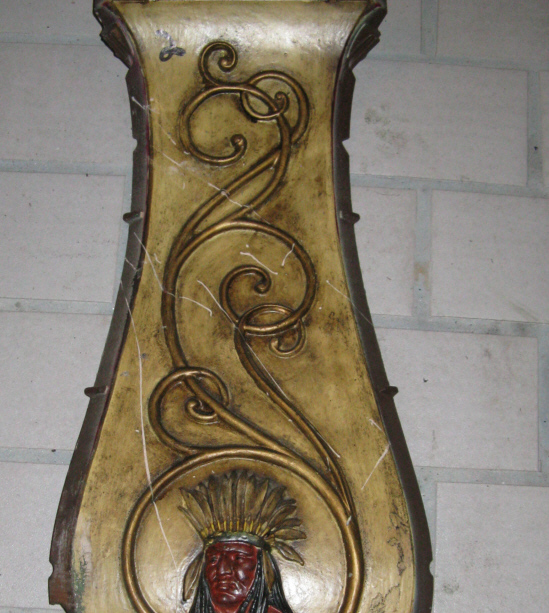
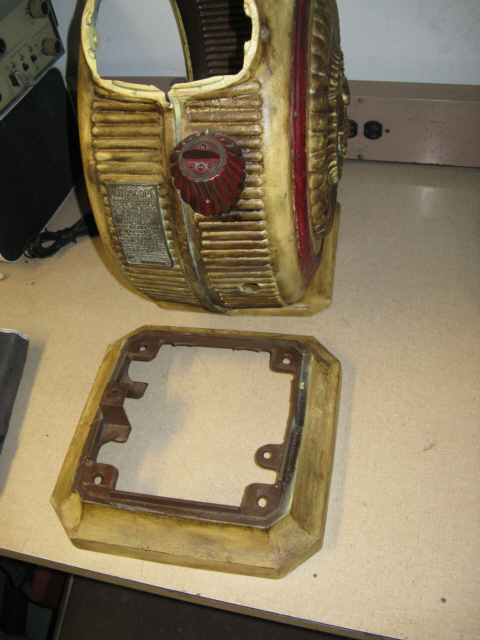
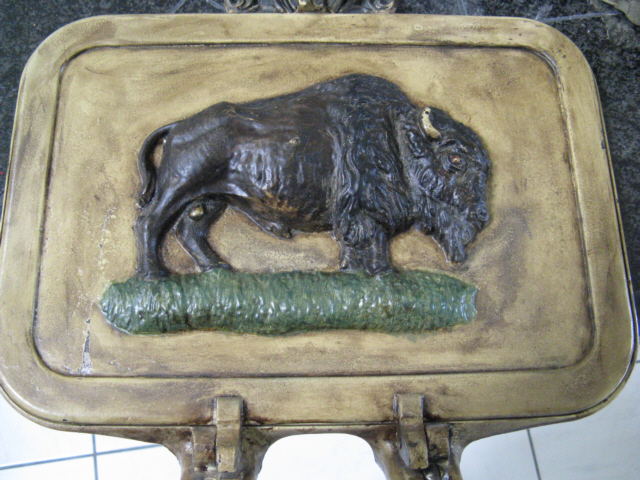
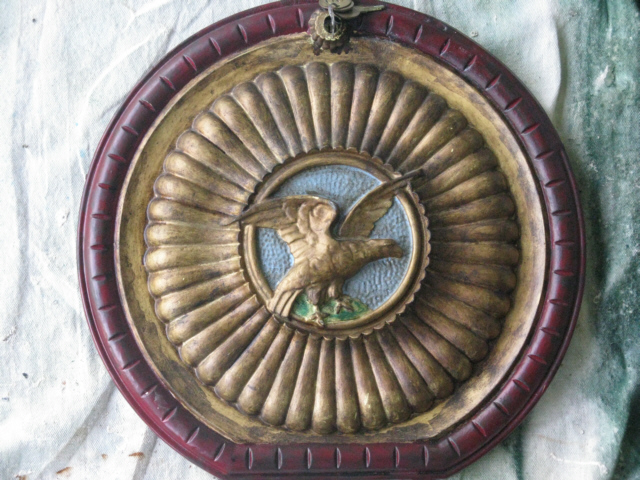
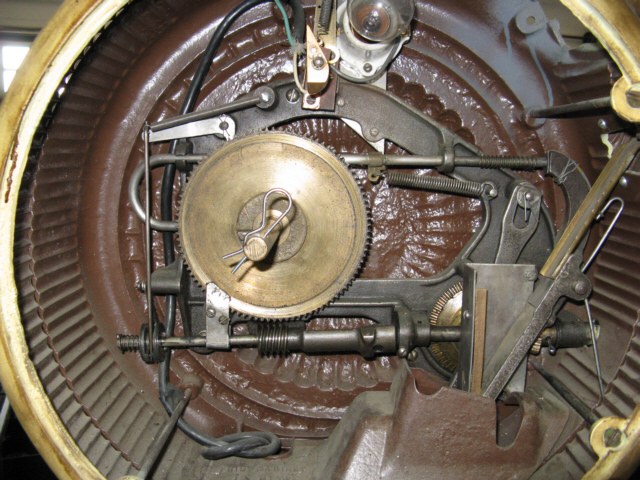
These images seem to show enhanced dirt on the paint. Not sure why this was done. There is no question it's old.
These are some images showing the cabinet "restoration" process.
If it was a true restoration it would have been refinished in silver, gold. or bronze as it appears these machines were built quickly and it has been said
there was no time to paint details which were included in the castings. Instead, they were completely painted one of the colors mentioned.
Some people say they were only painted silver, but recent documented evidence indicates 3 colors.
Over the years, this mutoscope was painted silver, then red, then green, then yellow and finally burgundy and a off white color
I have chosen a painting scheme I like for this restoration or revival
It's very similar to what was chosen for a Potter & Potter piece sold in 2019
Frankly the buyer got a great deal on that machine
What you see below took about a month to acheive
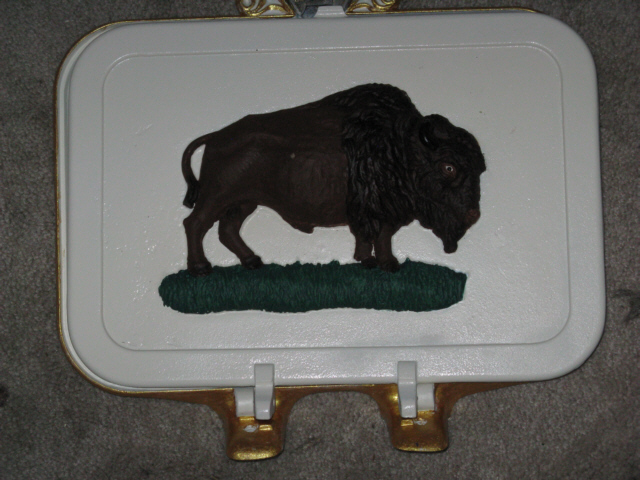
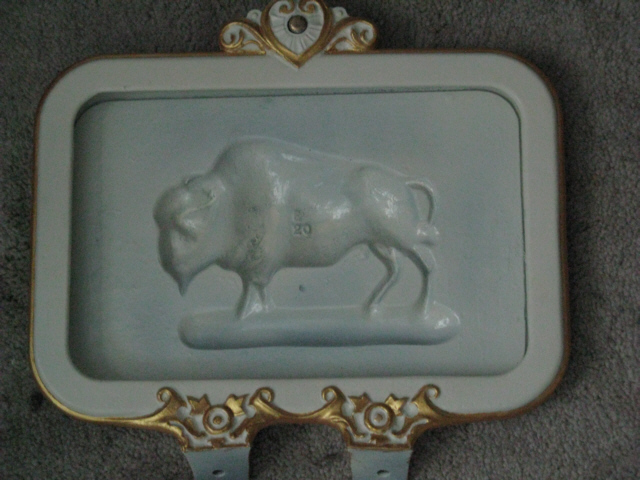
Here shown in the interior of this casting its marked E20, (E) for the "Indian" Mutoscope version and indicates it was an original part.
Some have questioned if this "Buffalo" version of the Indian Mutoscope sign holder was created by a third party.
The marking, part of the casting, clearly indicates this was created by the Mutoscope company.
It has been suggested that this mutoscope was created to celebrate the Pan-American Exposition in Buffalo NY from May 1 through November 2, 1901
I discovered there was a "Government building " at the exposition that showcased new technology which displayed "moving picture machines" which may have had these displayed there. There was also a "arcade" on the midway. Anyone reading this who has more information about Mutoscopes at the exposition in Buffalo, please email me.
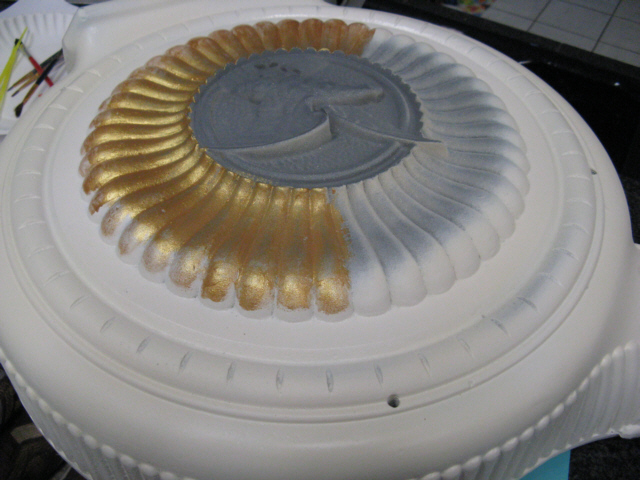
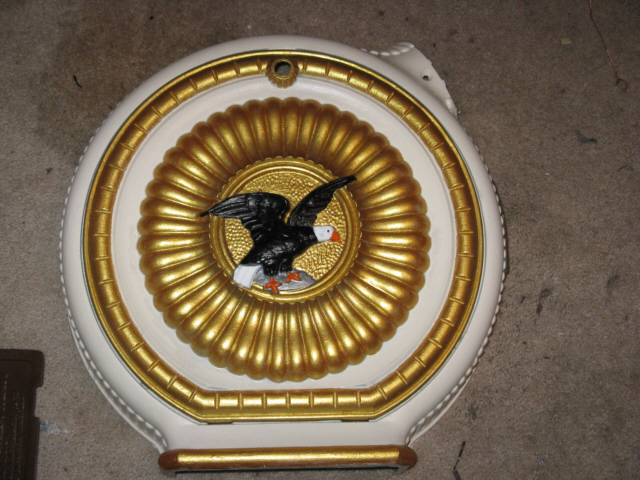
On the right the finished door is fitted to the other side of the head cabinet , it's detailed in 24K gold paint
All of this detailing was hand painted, some areas requiring 3, 4 or more coats to achieve the result you see here.
The camera is attempting to white balance the photo, the border is a off white porcelain look, where he eagle feathers are very bright white

Here are some of the side panels after stripping, repairs and priming.
Paint is limited in the portrait area, focusing on the background as to not decrease the casting detail on the indians.
The rope and beading will be painted in the same 24K gold as is the head case.
Notice the leaves at the bottom which match up to the leg leaves and oranges when the legs are installed.
There were some panel case repairs as this machine had a tough 120 year life.
Those repairs done by an expert in vintage cast iron repair.
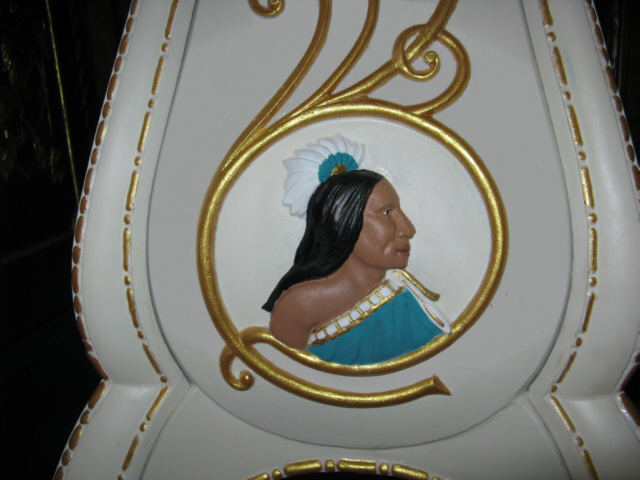
Some additional work on the indians were done later
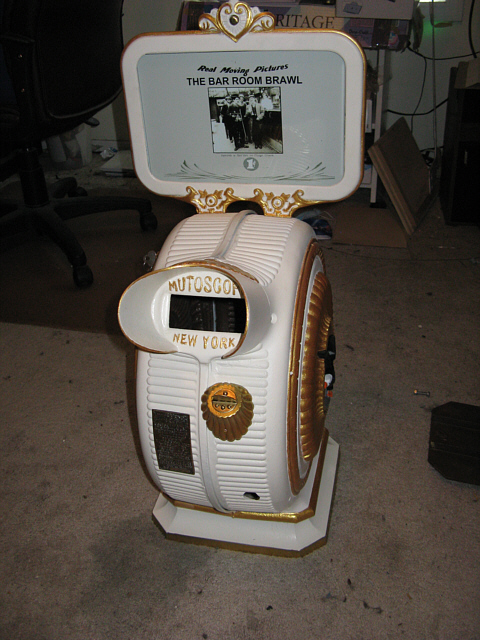
Here the case has been put together for this photo.
It's difficult to photograph this color as the camera corrects the white balance.
The color is more like porcelain as explained before, and not bright white as it appears here.
The sign in the frame was created to reflect the movie that will be in it.
The sign background is actually the same color as the case but the replacement thick glass has a slight green tint.
Originally as purchased it had a acrylic window.
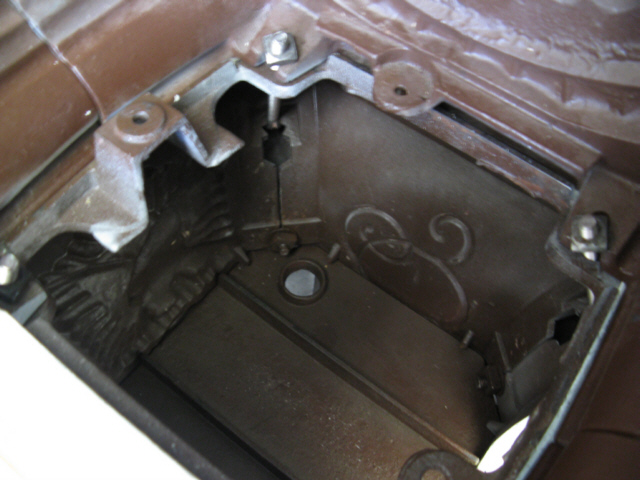
Here the panels have been joined together, and the head is secured to them.
Those long bolts in the corners hold the head on.
The hole in the lower plate in the corner is to pass the power cord through.
The nuts seen above that plate in the corners are holding the panels together secured to the legs
There are 3 of these on each leg
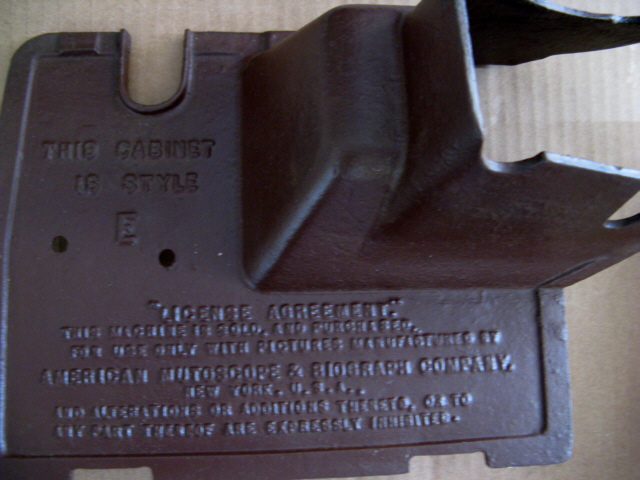
This casting covers the plate seen in the last photo. The notch on the upper left is to pass the cord through.
The text on the cover, "The Cabinet is Style "E" designates the machine it's attached to as a Indian Mutoscope.
The arrangement on the right is to allow the coin mechanism to operate there. (see #20 & #24 later)
The Indian Mutoscope mechanism repairs have not been fully detailed here . Though the Indian Mutoscope mechanism is very similar to the to the Clamshell
version, it's mechanism is unique to the Indian. One gear was replaced and the clutch cleaned as well as light lubrication and cleaning.
Finally, the glass viewfinder lens was replaced with a new old stock replacement, as the original through the years of use and servicing
had been badly chipped along the lens edge which was viewable along with surface scratches.
The result is below.
It's new life begins
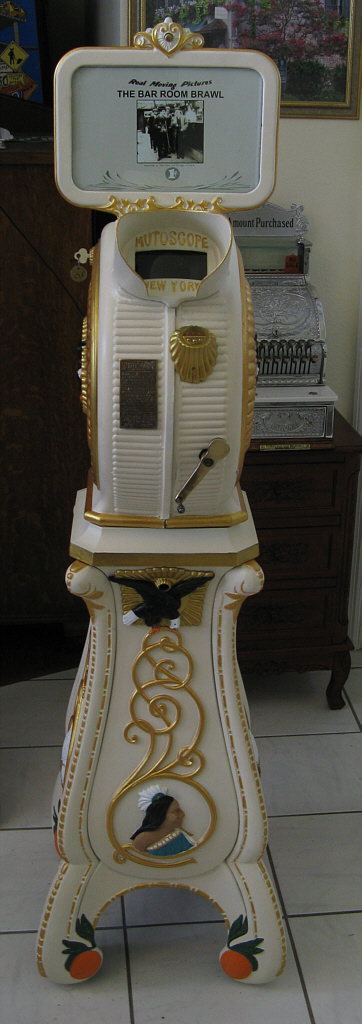
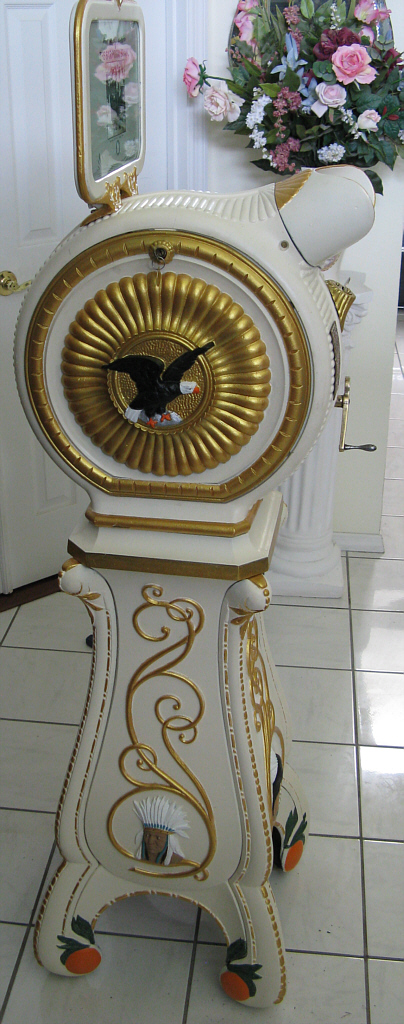

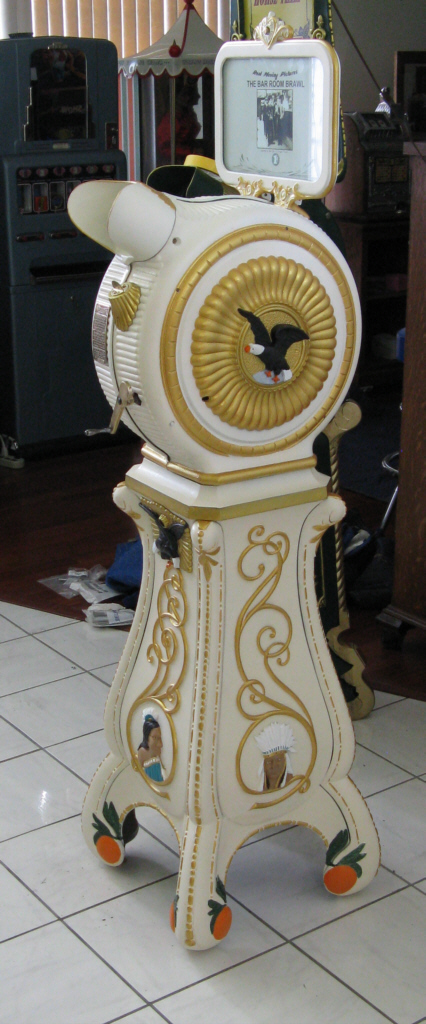
These photos against the white floor tile highlight the cabinet's porcelain like color.
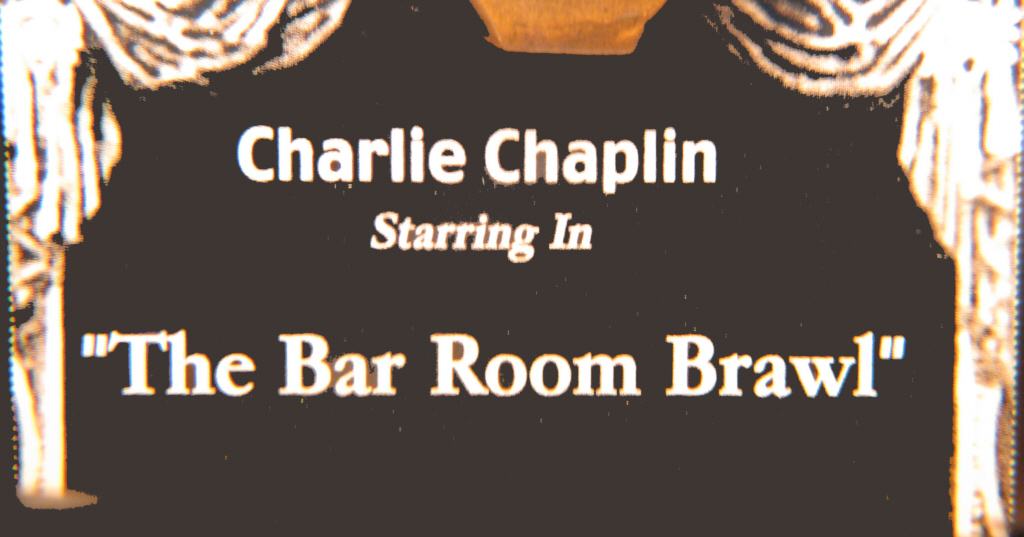
Photo taken through the viewfinder
Indian Mutoscope Operation
The mutoscope operation is very simple
as far as a user is concerned.
A penny is inserted in the coin slot.
Nothing happens until the handle is rotated.
It must be rotated in a clockwise direction.
After a few seconds the movie reel will begin to turn, then the internal electric light will illuminate.
A penny is inserted in the coin slot.
Nothing happens until the handle is rotated.
It must be rotated in a clockwise direction.
After a few seconds the movie reel will begin to turn, then the internal electric light will illuminate.
Continuing to turn the handle allows the
movie to play, at the end of the movie it stops and the light shuts off.
At any time, if the turning of the handle stops or is rotated counter clockwise the movie stops.
At any time, if the turning of the handle stops or is rotated counter clockwise the movie stops.
Tech
Tips
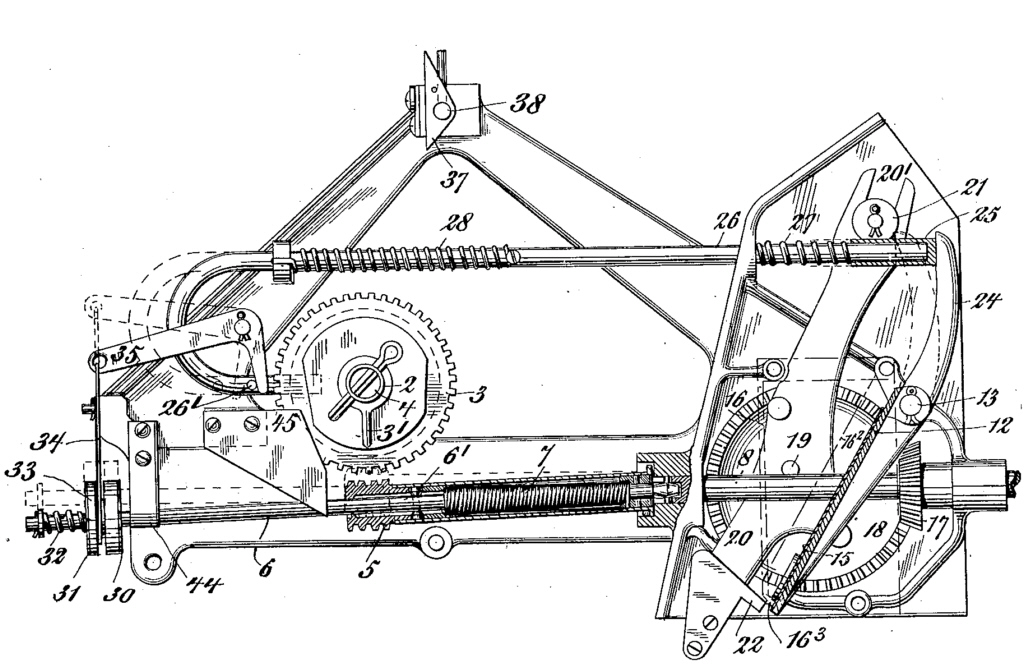
This is the patent drawing for the mutoscope
There were some slight changes made to this design for the Indian Mutoscope but functionally it's the same.
I am still looking for the Indian Mutoscope exploded parts listing, a big plus would be one that shows the buffalo frame.
Please email me if your reading this and can share more information about this version of the Mutoscope
EMAIL ME HERE
Here is something interesting I found in my recent Clamshell Mutoscope restoration
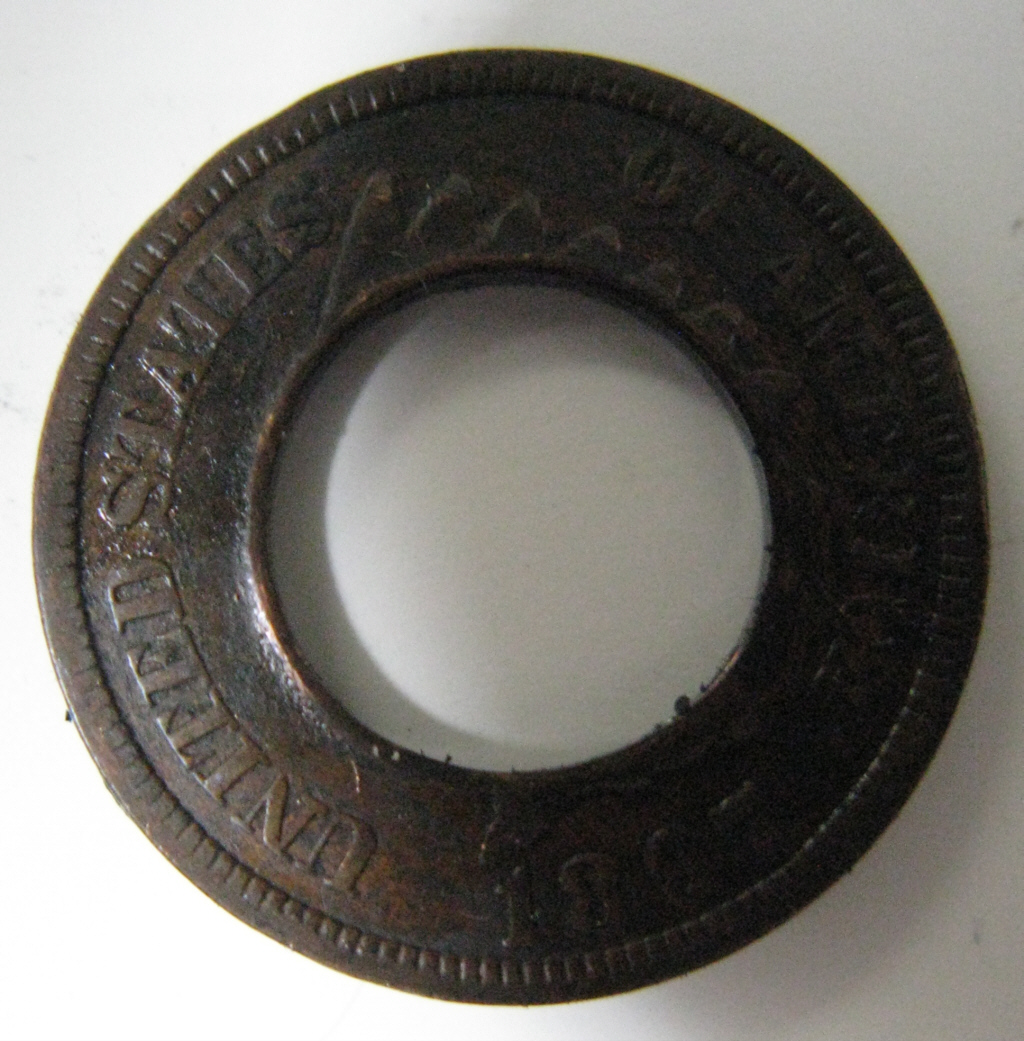
A penny was drilled to become a washer, but what makes this even more special it's a Indian Head penny!
There
are a couple of obvious lubrication points on the mutoscope mechanism.


On the right side are 2 holes in the
casting for oil to lubricate the handle shaft.
The red circle to the left shows the
worm gear, I
used lubriplate grease here.
On the far left, circled in black is the clutch, which prevents the handle operating the mechanism if turned in reverse
It should NOT be lubricated! It uses the friction of 2 discs and a spring to operate. Lubricating it will cause it to slip.
There is one additional lubrication point accessed on the back side of the head case for that gear by the middle red circle.
There are a few 2 other places that would benefit from lubrication. They are where the "J hook " shaft, #26 (see drawing) goes through the casting.
LAMP SWITCH
Below in the Mutoscope patent drawing, #38 at the top, has 2 functions.
When pivoted due to the reel rotation , it controls single card flipping and utilizing a contact pin on it completes the lamp circuit.
The contacts (forming a switch) located on the block below #38 are insulated from each other.
To install a new cord, remove the block mounting screw and rotate the insulating block to the left to gain access
to the porcelain lamp socket terminal screw. (see photo below for lamp socket style and terminal locations)
The other power cord wire is connected to the contact block switch near the bottom of the block.
There is an additional wire (shown in green) which connects the right side of the lamp socket terminal to the contact block (switch) which should already be there.
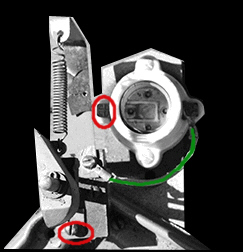
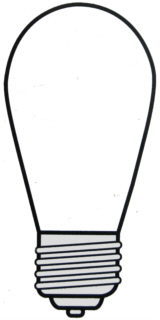 I recommend
a 11W S14 Clear Medium Base Bulb , such as haleo #9051 brass base bulb
I recommend
a 11W S14 Clear Medium Base Bulb , such as haleo #9051 brass base bulb
On the far left, circled in black is the clutch, which prevents the handle operating the mechanism if turned in reverse
It should NOT be lubricated! It uses the friction of 2 discs and a spring to operate. Lubricating it will cause it to slip.
There is one additional lubrication point accessed on the back side of the head case for that gear by the middle red circle.
There are a few 2 other places that would benefit from lubrication. They are where the "J hook " shaft, #26 (see drawing) goes through the casting.
LAMP SWITCH
Below in the Mutoscope patent drawing, #38 at the top, has 2 functions.
When pivoted due to the reel rotation , it controls single card flipping and utilizing a contact pin on it completes the lamp circuit.
The contacts (forming a switch) located on the block below #38 are insulated from each other.
To install a new cord, remove the block mounting screw and rotate the insulating block to the left to gain access
to the porcelain lamp socket terminal screw. (see photo below for lamp socket style and terminal locations)
The other power cord wire is connected to the contact block switch near the bottom of the block.
There is an additional wire (shown in green) which connects the right side of the lamp socket terminal to the contact block (switch) which should already be there.

 I recommend
a 11W S14 Clear Medium Base Bulb , such as haleo #9051 brass base bulb
I recommend
a 11W S14 Clear Medium Base Bulb , such as haleo #9051 brass base bulb
This is the patent drawing for the mutoscope
There were some slight changes made to this design for the Indian Mutoscope but functionally it's the same.
I am still looking for the Indian Mutoscope exploded parts listing, a big plus would be one that shows the buffalo frame.
Please email me if your reading this and can share more information about this version of the Mutoscope
EMAIL ME HERE
Here is something interesting I found in my recent Clamshell Mutoscope restoration

A penny was drilled to become a washer, but what makes this even more special it's a Indian Head penny!